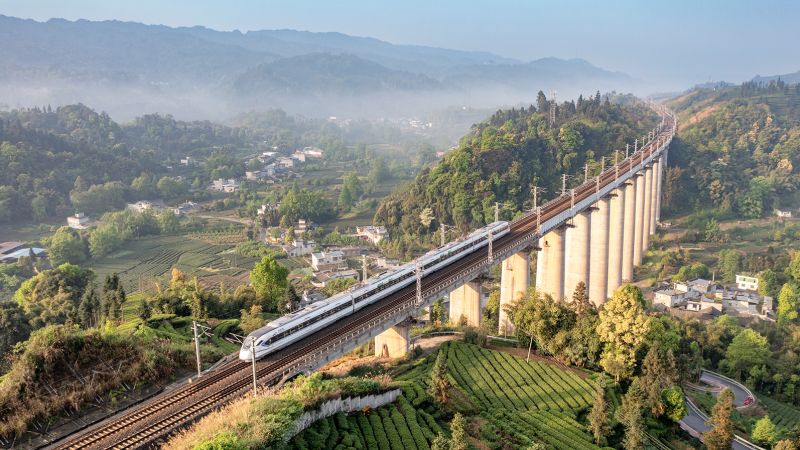CNN —
High speed trains have proved their worth across the world over the past 50 years.
It’s not just in reducing journey times, but more importantly, it’s in driving economic growth, creating jobs and bringing communities closer together. China, Japan and Europe lead the way.
So why doesn’t the United States have a high-speed rail network like those?
For the richest and most economically successful nation on the planet, with an increasingly urbanized population of more than 300 million, it’s a position that is becoming more difficult to justify.
Although Japan started the trend with its Shinkansen “Bullet Trains” in 1964, it was the advent of France’s TGV in the early 1980s that really kick-started a global high-speed train revolution that continues to gather pace.
High-speed train revolution
Passengers prepare to board a Shinkansen bullet train in Kyoto, Japan. Issei Kato/Reuters
But it’s a revolution that has so far bypassed the United States. Americans are still almost entirely reliant on congested highways or the headache-inducing stress of an airport and airline network prone to meltdowns.
China has built around 26,000 miles (42,000 kilometers) of dedicated high-speed railways since 2008 and plans to top 43,000 miles (70,000 kilometers) by 2035.
Meanwhile, the United States has just 375 route-miles of track cleared for operation at more than 100 mph.
Many Americans have no concept of high-speed rail and fail to see its value. They are hopelessly stuck with a highway and airline mindset. William C. Vantuono, editor-in-chief of Railway Age
“Many Americans have no concept of high-speed rail and fail to see its value. They are hopelessly stuck with a highway and airline mindset,” says William C. Vantuono, editor-in-chief of Railway Age, North America’s oldest railroad industry publication.
Cars and airliners have dominated long-distance travel in the United States since the 1950s, rapidly usurping a network of luxurious passenger trains with evocative names such as “The Empire Build
Continue Reading on CNN
This preview shows approximately 15% of the article. Read the full story on the publisher's website to support quality journalism.
